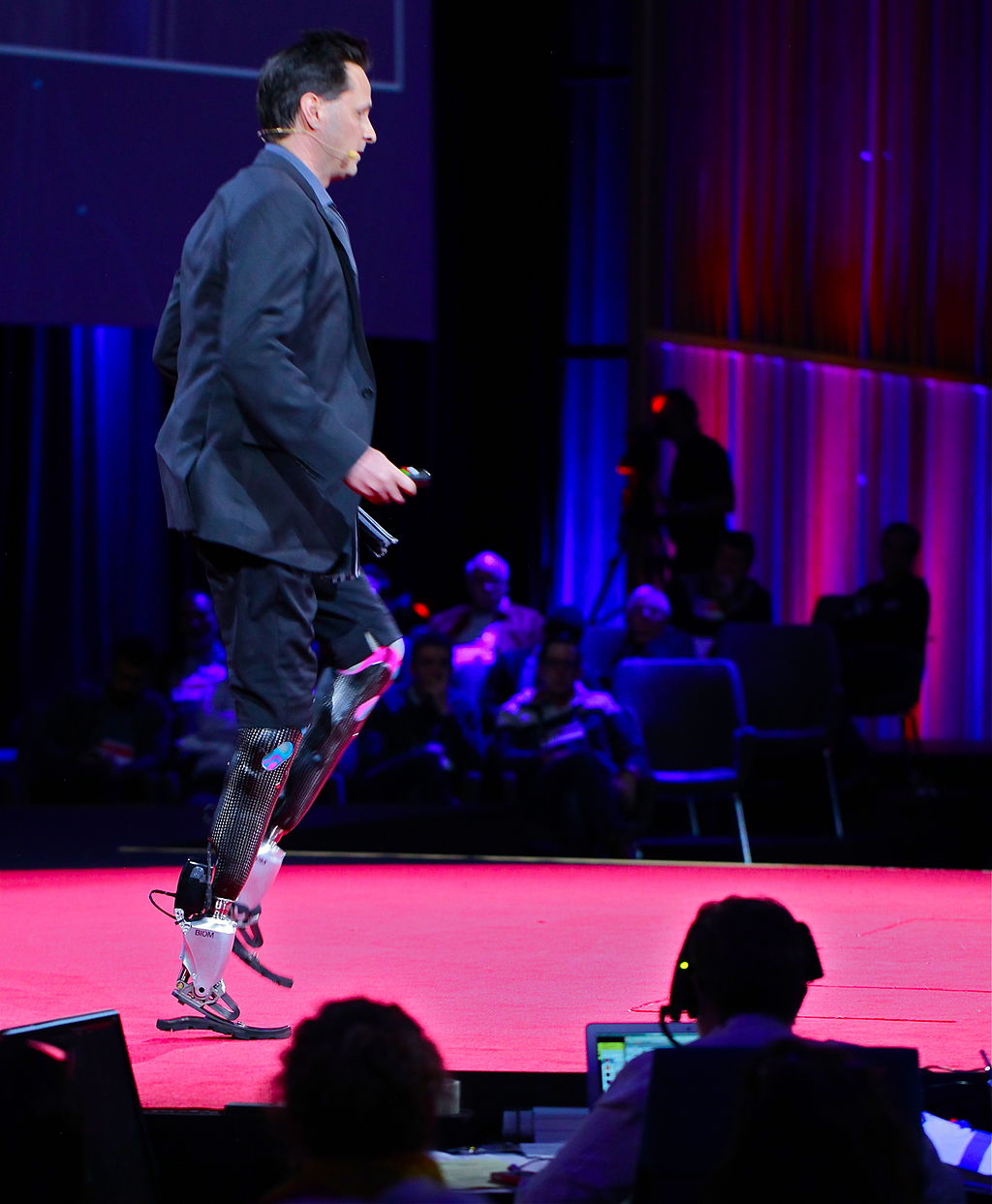
Updating the Amputation Process
Hugh Herr, head of the Biomechatronics group at the MIT Media Lab — and who was called “Leader of the Bionic Age” by TIME in 2011 — has helped author a study on a new form of amputation called agonist-antagonist myoneural interface (AMI). The process takes its inspiration from the way the body already works. Our muscles control limbs using agonist-antagonist pairs: one flexes while the opposite muscle stretches, sending electrical signals to your brain so it knows where the limb is.
Current amputation techniques, which haven’t changed much since the Civil War, disrupt this relationship by slicing through nerves and muscles, and then wrap some additional muscle around the end of the limb for cushioning. This causes nerve pain because the nerves do not have anything to control, and the subsequent nerve weakening makes it harder to control any prostheses using the body’s natural circuitry.

The study argues that prostheses should use this muscle relationship by grafting pieces of muscle from other parts of the body onto the amputation site; Herr says, “using the body’s natural sensors to create these sensations.” Implanted muscle electrodes would then moderate the communication between the grafted muscles and external limb. The process proved successful when it was tested on rats.
Shriya Srinivasan, a graduate student in the Harvard-MIT Program in Health Sciences and Technology (HST) and lead author on the paper, said in the MIT release, “We can harvest these muscle grafts from almost anywhere in the body, making this applicable to a large number of cases ranging from trauma to chronic pain.”
A More Biological Prosthetic
There are two elements to a successful prosthetic: the quality of the prosthetic itself, and how it is attached to the body. The quality of prostheses has been advancing rapidly in recent years, with prostheses utilizing brain-computer interfaces and 3D printing to make them more comfortable for the user.
However, changing the amputation side of the equation could offer, as the abstract of the study states, “the potential for enhanced prosthetic controllability and sensation,” leading to better control, sensory feedback, and proprioception (knowing what your arm is doing without looking at it). This proprioception is what most modern prostheses are missing — meaning that if this idea proves successful in humans, it could give people with missing limbs a key property of natural limbs back.
As the process can work on almost any form of prosthetic attachment, and is classed as low-risk medically because it just involves rearranging tissues, it has the potential to be integrated into standard medical practice with relative ease — and make prostheses more comfortable and functional for anyone requiring them.